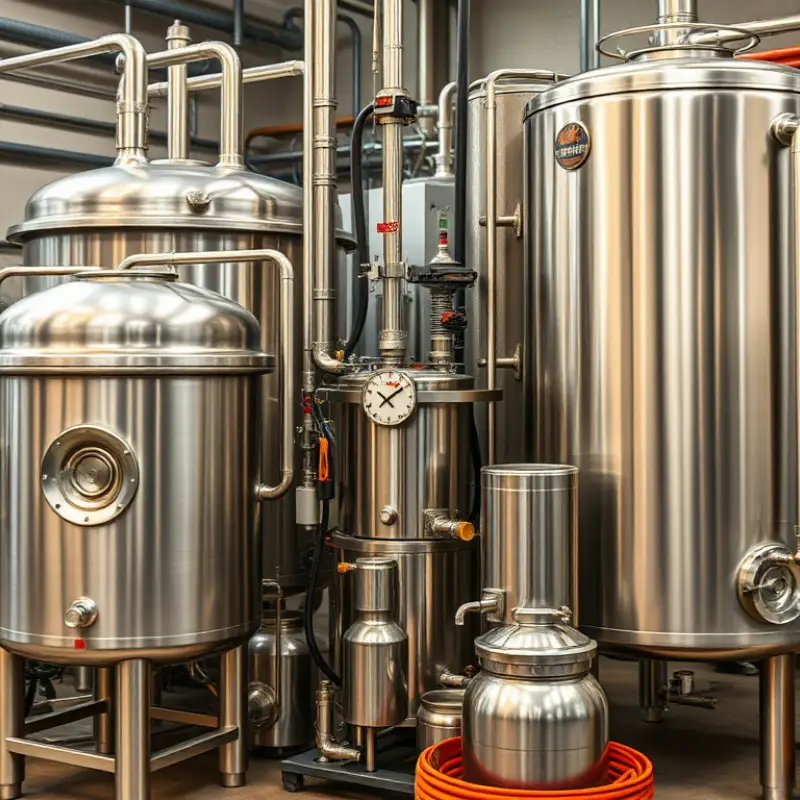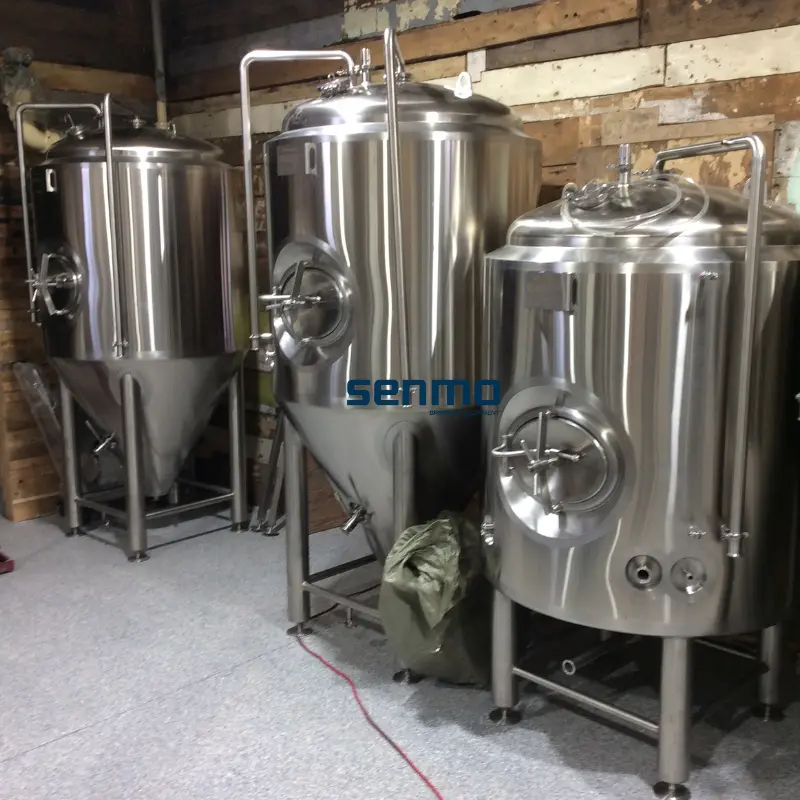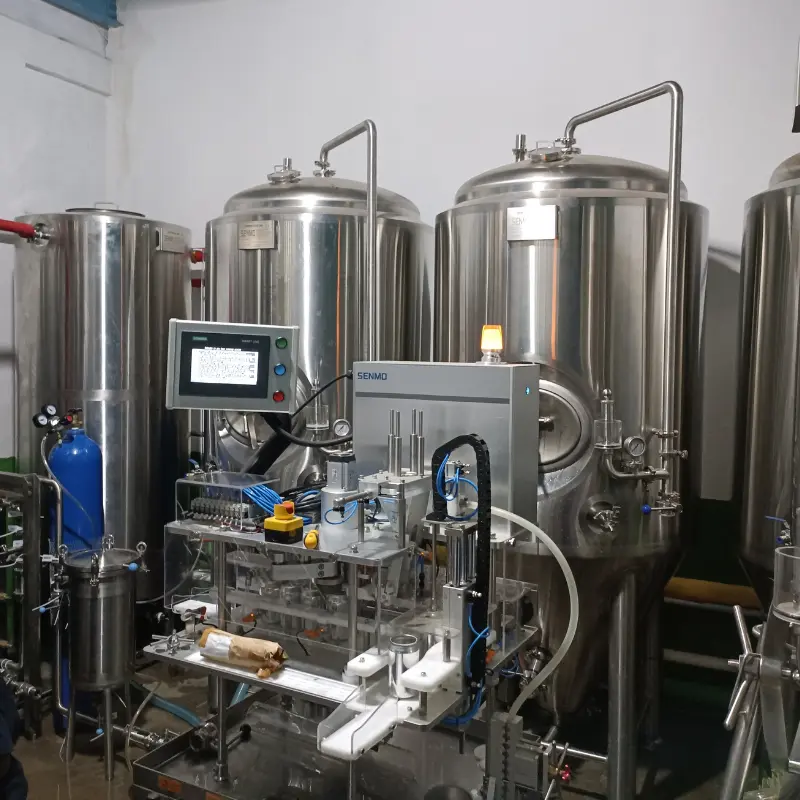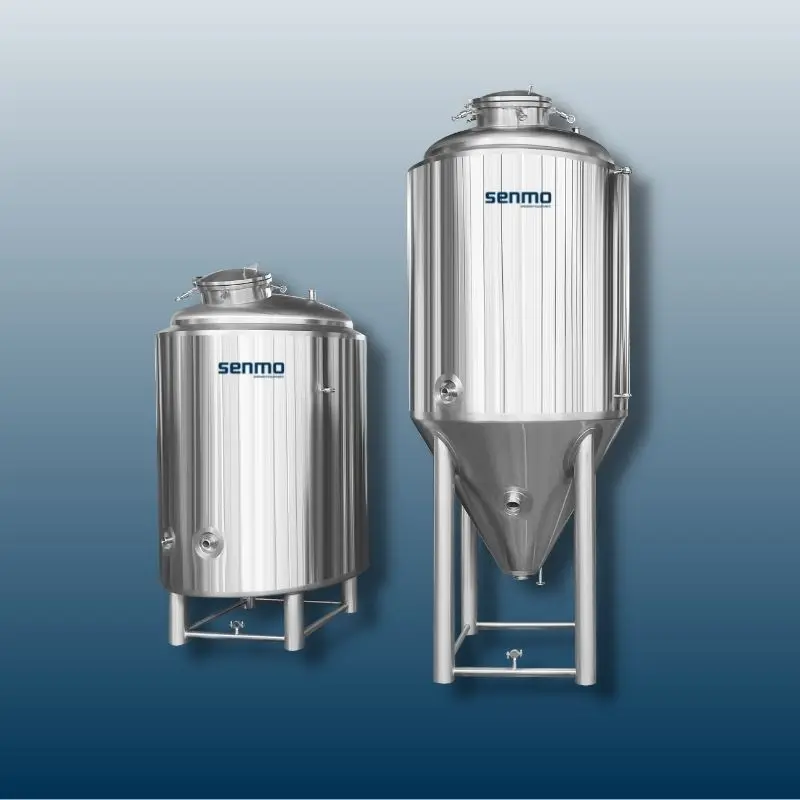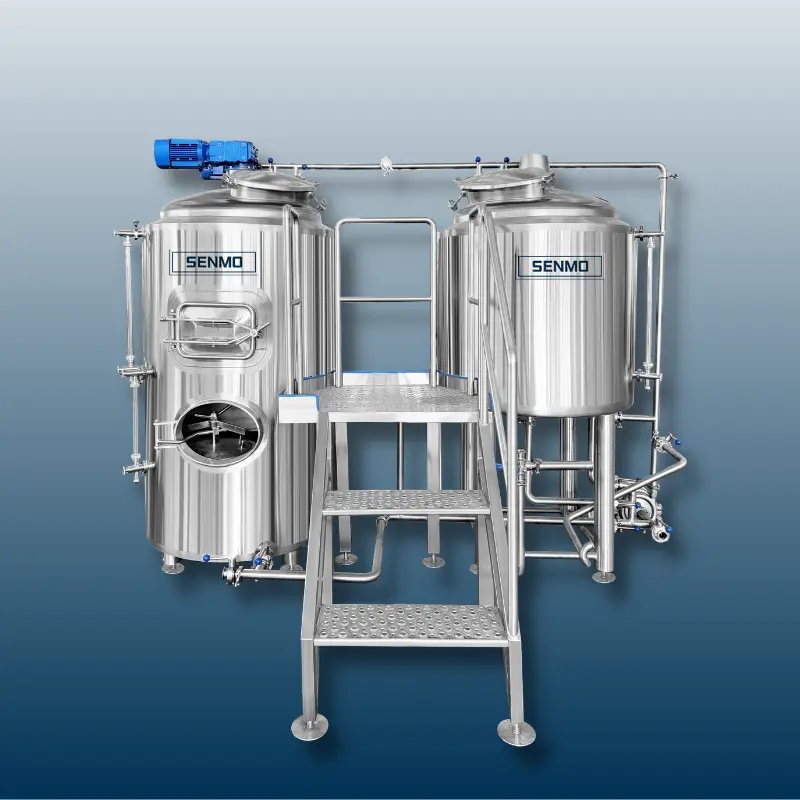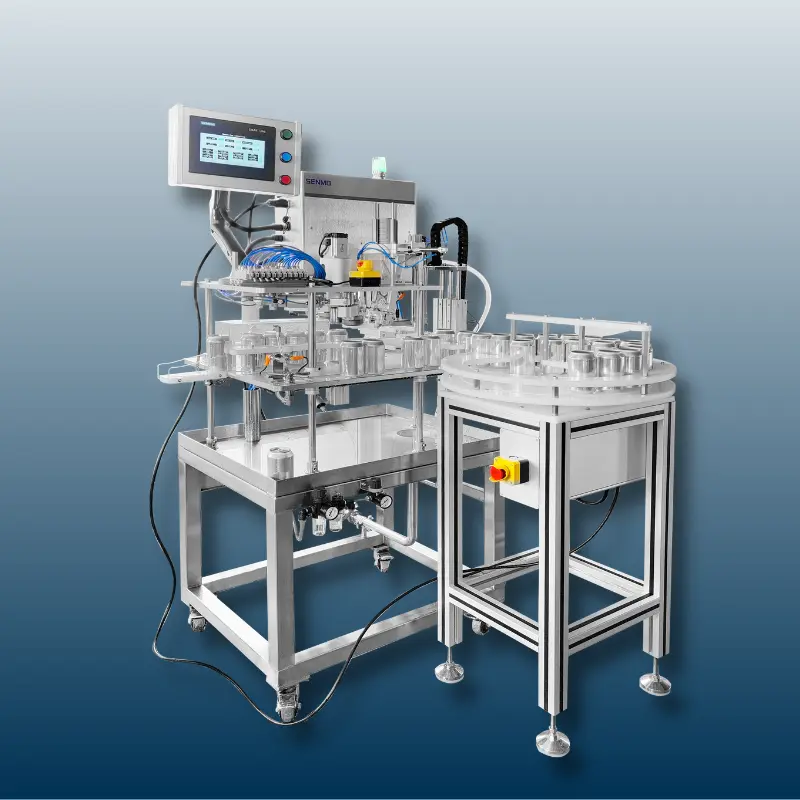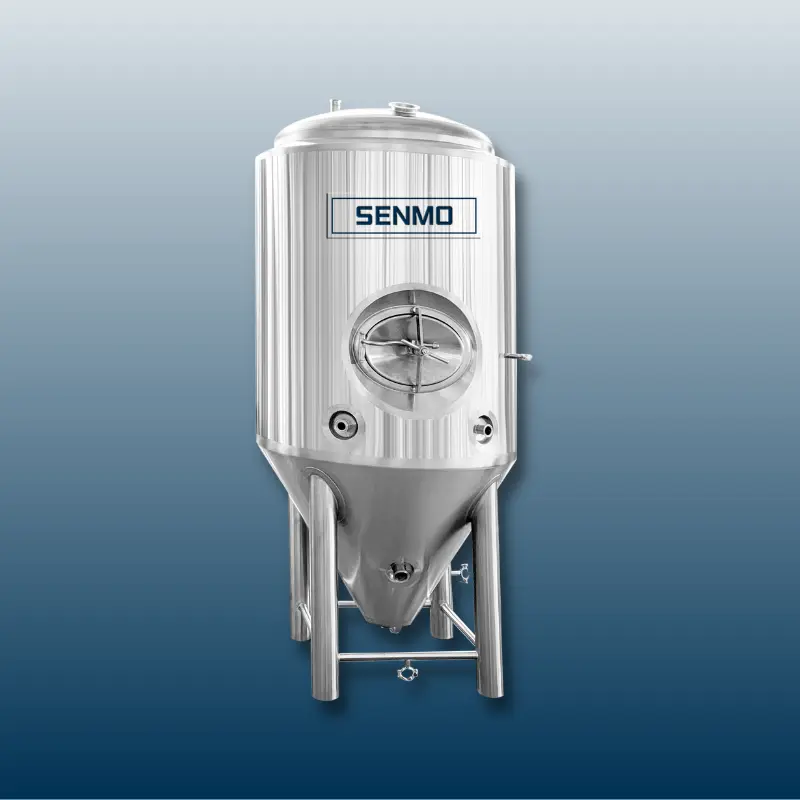The global craft beer movement has seen remarkable growth over the past decade, with microbreweries playing a key role in redefining beer culture. As consumers increasingly seek out unique, locally brewed options, the demand for small-batch, high-quality beer continues to rise. This trend has opened the door for passionate entrepreneurs to enter the brewing industry and bring their own flavor to the market—both literally and figuratively.
For many aspiring brewers, launching a microbrewery is a dream fueled by creativity and community. But behind the passion lies a very practical challenge: the cost of equipment. From kettles and fermenters to bottling lines and cooling systems, outfitting a brewery with the right tools can be a major financial commitment. Equipment pricing varies significantly based on production capacity, level of automation, and overall business goals. Whether you're starting a 3-barrel nano brewery or a 15-barrel microbrewery, understanding the financial landscape is essential before pouring your first pint.
This guide explores microbrewery equipment pricing, outlining what to expect when setting up your brewery and offering insights on how to budget wisely. We’ll break down the essential components of a brewing system, provide cost estimates across different scales of production, and share practical budgeting tips to help you launch efficiently—without sacrificing quality. If you're serious about brewing and ready to invest, this article is your starting point for making informed, cost-effective decisions.
Key Factors Affecting Microbrewery Equipment Costs
When planning a microbrewery, understanding what drives equipment costs is essential to creating an accurate and realistic budget. Several key factors can significantly influence your overall investment. Let’s break them down one by one.
1. Production Capacity (BBL / Daily Output)
One of the most important cost drivers is your brewery's barrel capacity, often measured in BBL (1 BBL = 31 gallons or ~117 liters). The larger your brewing system, the more expensive the equipment—often exponentially so. A 3-BBL system might be suitable for a nano brewery, while a 15-BBL or larger setup supports a full microbrewery or production facility.
| System Size | Typical Output | Estimated Cost Range |
|---|---|---|
| 1–3 BBL | Small batches, pilot brews | $50,000 – $100,000 |
| 5–10 BBL | Small commercial output | $100,000 – $250,000 |
| 15+ BBL | Full microbrewery scale | $250,000 – $500,000+ |
A 5-BBL setup may only require one or two fermenters, while a 15-BBL brewery will likely need six or more, adding significantly to the cost.
2. Equipment Material (Stainless Steel vs Copper)
Stainless steel is the industry standard due to its durability, corrosion resistance, and ease of cleaning. It is also more cost-effective and widely available. Copper, while offering excellent heat conductivity and a traditional aesthetic, is more expensive and requires additional maintenance.
| Material | Pros | Cons | Cost Impact |
|---|---|---|---|
| Stainless Steel | Durable, easy to clean, affordable | Less aesthetic appeal | Standard baseline |
| Copper | Great heat transfer, visual appeal | Expensive, oxidizes easily | +20%–40% more |
Tip: Unless you're opening a brewpub focused on visual design (e.g., open brewing systems visible to guests), stainless steel is the practical choice.
3. Level of Automation (Manual vs Semi-Auto vs Fully Auto)
Automation affects not only upfront cost but also long-term labor efficiency. Manual systems are cheaper but require more staffing and labor time. Fully automated systems can dramatically increase output with fewer hands but come with a significantly higher price tag.
| Automation Level | Labor Needs | Initial Cost | Ideal For |
|---|---|---|---|
| Manual | High | Low | Small startups, hands-on |
| Semi-Automated | Medium | Medium | Scaling breweries |
| Fully Automated | Low | High | High-volume production |
A manual 5-BBL system may cost $80,000, while a fully automated 5-BBL setup could exceed $150,000.
4. New vs Used Equipment
Buying used equipment is a common strategy for new brewers looking to cut initial costs. However, used gear comes with risks: limited warranties, hidden wear, or outdated technology.
| Condition | Pros | Cons | Savings Potential |
|---|---|---|---|
| New | Latest tech, full warranty | Higher upfront cost | – |
| Used | Lower price, quick access | Unknown history, no warranty | 20%–60% savings possible |
Pro Tip: Always inspect used gear in person or request a video demonstration before purchasing.
5. Country of Origin & Brand Differences
Where your equipment is made can significantly affect the price and reliability. Systems from Europe or the U.S. may need more money, while Chinese systems tend to be more affordable, a lower price with the same quality. A 10-BBL Chinese brewhouse might cost $90,000, while a similar German-made system could be $150,000 or more. We are a famous microbrewery equipment manufacturer and exporter located in China. Our products can be exported to anywhere in the world. Our company name is Senmo Brewery Equipment. Welcome to contact us.
Each of these factors will influence your final equipment cost in a different way. Understanding how they interact—like choosing a mid-size system with moderate automation and stainless steel components—can help you create a setup that fits both your production goals and your financial capacity.
Essential Equipment and Cost Estimates
Setting up a microbrewery requires a range of specialized equipment to cover the entire brewing process—from mashing to fermentation, and eventually packaging. Below is a breakdown of the most essential components and their typical cost ranges. Keep in mind that prices vary based on size, material, and level of automation.
1. Mash Tun
Function: Converts grain starches into fermentable sugars through hot water steeping.
Cost Range: $5,000 – $30,000+
A 5-BBL stainless steel mash tun with basic manual controls may cost around $8,000. A fully automated 15-BBL system could exceed $25,000.
2. Lauter Tun
Function: Separates liquid wort from grain solids. Often paired with the mash tun or combined as a combo vessel.
Cost Range: $5,000 – $25,000+
Note:
Many small breweries use a combination Mash/Lauter Tun to save space and reduce costs.
3. Brew Kettle / Boil Kettle
Function: Boils the wort and sterilizes it, allowing for hop addition and flavor development.
Cost Range: $7,000 – $40,000+
A 10-BBL gas-fired kettle with built-in whirlpool function may cost around $18,000–$22,000.
4. Fermenters
Function: Ferments the wort into beer over a span of days to weeks. Usually sized to match or exceed brewhouse capacity.
Cost Range: $2,000 – $20,000+ per unit
| Fermenter Size | Estimated Cost (Stainless Steel) |
|---|---|
| 5 BBL | $3,500 – $6,000 |
| 10 BBL | $6,000 – $10,000 |
| 15 BBL | $9,000 – $15,000 |
Note:
Most breweries need multiple fermenters to maintain production flow. A 10-BBL brewery might operate 4–6 fermenters to brew on a weekly cycle.
5. Bright Beer Tanks
Function: Stores and conditions beer after fermentation before packaging.
Cost Range: $2,500 – $15,000+
Bright tanks are optional in small operations but critical in production breweries for carbonation, filtration, and final cold storage.
6. Cooling System (Glycol Chiller)
Function: Maintains precise fermentation temperatures and cools wort quickly post-boil.
Cost Range: $5,000 – $15,000+
A glycol chiller system suitable for a 10-BBL brewery might cost $8,000 including tanks, piping, and installation.
7. Control Panel & Automation System
Function: Allows brewers to control temperatures, timers, pumps, and other processes.
Cost Range: $3,000 – $20,000+
Manual systems may include basic temperature controls, while advanced systems offer touchscreen automation, remote access, and recipe programming.
8. Cleaning in Place (CIP) System
Function: Cleans fermenters, kettles, and tanks using a pressurized cleaning loop, improving sanitation and efficiency.
Cost Range: $2,000 – $10,000+
Tip:
A basic mobile CIP cart is often enough for a small brewery, while larger systems may be integrated into brewhouse plumbing.
9. Packaging Equipment (Kegging, Bottling, or Canning Line)
Function: Packages finished beer for sale or distribution.
Cost Range: $10,000 – $100,000+
| Packaging Type | Basic Setup Cost | Advanced Line |
|---|---|---|
| Kegging System | $2,000 – $6,000 | Up to $15,000 |
| Bottling Line | $10,000 – $40,000 | $50,000+ |
| Canning Line | $20,000 – $60,000 | $100,000+ |
Note:
Many new brewers start with kegging to serve draft beer locally before investing in more complex packaging solutions.
With a good understanding of each piece of equipment and its cost, you can now tailor your setup to your goals and budget. Whether you're launching a small taproom or a larger distribution-focused brewery, selecting the right combination of gear is crucial for both product quality and financial sustainability.
Total Budget Ranges Based on Brewery Size
While the exact equipment cost for a microbrewery varies depending on production goals, facility size, and level of automation, it’s helpful to look at estimated total budgets based on common brewery types. Below are general budget ranges that include all essential brewing equipment, installation, and basic operational setup—but exclude things like building renovations, licenses, and staffing.
1. Nano Brewery (1–3 BBL)
Estimated Equipment Budget: $50,000 – $100,000
Nano breweries are perfect for hobbyists or entrepreneurs testing the market with small-batch, high-quality brews. These setups often rely on manual systems with minimal automation and compact space usage.
Included in Budget:
1–2 vessel brewhouse (1–3 BBL)
2–4 small fermenters
Glycol chiller (scaled-down)
Basic manual controls
Mobile CIP cart
Kegging station or growler fills
A home-to-commercial scale hybrid system, such as a 2-BBL electric brewhouse with 3 fermenters and a chiller, could run around $75,000 fully installed.
2. Microbrewery (5–15 BBL)
Estimated Equipment Budget: $100,000 – $500,000
This is the most common starting point for commercial breweries aiming to serve taprooms, local bars, and small retail distribution. Mid-range automation and efficiency become important at this level.
Included in Budget:
2–3 vessel brewhouse (5–15 BBL)
4–8 fermenters
1–2 bright beer tanks
Full glycol cooling system
Semi-automated controls
CIP system
Kegging and/or bottling line
A 10-BBL brewhouse with 6 fermenters, bright tank, glycol system, and a semi-automated kegging line could cost around $250,000–$300,000, depending on equipment origin and layout.
3. Production Brewery (15+ BBL)
Estimated Equipment Budget: $500,000 – $2 million+
Designed for high-volume output and regional or national distribution, production breweries demand advanced automation, large-scale fermentation capacity, and robust packaging solutions.
Included in Budget:
3–4 vessel brewhouse (15–30+ BBL)
8–20 fermenters
3+ bright beer tanks
Full automation (touchscreen, remote controls)
Large-scale glycol & heat exchanger system
Inline CIP and filtration system
High-speed bottling/canning/kegging lines
A 20-BBL automated system with a full canning line and enough fermentation capacity to brew several times per week may exceed $1 million in total equipment costs.
Quick Reference Table
| Brewery Type | Batch Size (BBL) | Typical Output (Annual) | Estimated Equipment Budget |
|---|---|---|---|
| Nano Brewery | 1–3 | Up to 300 barrels | $50,000 – $100,000 |
| Microbrewery | 5–15 | 500 – 3,000 barrels | $100,000 – $500,000 |
| Production Brewery | 15+ | 3,000+ barrels | $500,000 – $2,000,000+ |
These budget ranges are starting points, and real-world costs may fluctuate depending on your location, equipment supplier, and operational strategy. That said, they provide a strong framework to help brewers plan for a financially sustainable launch.
Tips on Budgeting and Cost Optimization
Starting a microbrewery is both an exciting and capital-intensive journey. But even with limited resources, there are smart ways to stretch your budget without sacrificing quality or efficiency. Below are practical tips to help you optimize your spending and stay within financial reach.
1. Start Small, Scale Strategically
You don’t need to go big from day one. Starting with a smaller brewhouse (3–5 BBL) allows you to test your recipes, build a local customer base, and refine your operations before scaling.
Tip:
Focus on building scalable infrastructure—such as space for more fermenters or piping for automation—so you can expand without major overhauls later.
2. Prioritize Core Equipment
It's tempting to invest in flashy add-ons like advanced lab gear or a full canning line, but your priority should be core brewing equipment: brewhouse, fermenters, cooling system, and basic packaging (e.g., kegs or growler fills).
Must-Have List for a Lean Start:
2-vessel brewhouse
2–4 fermenters
Glycol chiller
Manual controls
Basic kegging station or direct-to-taproom setup
3. Consider Quality Used Equipment
Used brewing equipment can cut costs by 20–60%, especially for fermenters, kegs, or CIP tanks. Look for well-maintained systems from breweries upgrading or closing.
Tips for Buying Used:
Inspect in person or request videos of operation
Ask for maintenance logs or warranty transfer details
Partner with a local brewery consultant for evaluation
Popular Sources:
ProBrewer Classifieds
BrewBids
Auction sites or regional brokerages
4. Bundle Purchases from One Vendor
Buying multiple components—like brewhouse, tanks, and chiller—from the same supplier often leads to discounts, reduced shipping costs, and better post-sale support.
Bonus: Vendors sometimes offer installation assistance or system design consultations if you buy a full turnkey package.
5. Focus on Energy Efficiency Early
Low-efficiency systems might be cheaper upfront but cost far more in the long run. Investing in insulated vessels, variable-speed pumps, or energy-saving chillers can lead to major savings over time.
A well-insulated boil kettle might reduce propane/electricity usage by 15–25% per brew—adding up quickly across hundreds of batches.
6. Plan for Hidden Costs
It’s easy to underestimate installation, plumbing, electrical upgrades, or even freight fees—especially for imported gear.
Rule of Thumb:
Add 10–20% of your equipment total as a buffer for “surprise costs”, including local code compliance, special permits, or last-minute fittings.
7. Negotiate, Always
Most brewing equipment vendors are open to negotiation, especially if you’re purchasing multiple items or buying during industry trade show seasons.
Negotiation Ideas:
Request free spare parts kits
Ask for shipping discounts
Bundle in maintenance tools or CIP accessories
8. Work With a Consultant or Mentor
Hiring a brewery consultant or talking to a seasoned local brewer can prevent costly mistakes. They’ll help you identify equipment that fits your workflow and spot overpriced items.
Bonus:
They often have industry connections and may point you toward off-market equipment deals.
A well-crafted budget doesn't mean cutting corners—it means spending wisely. By planning ahead, focusing on essentials, and staying flexible, you can build a solid brewing foundation while keeping your finances in check.
Conclusion
Starting a microbrewery is a bold and exciting endeavor, but it's also one that requires careful planning and smart financial decisions. Understanding microbrewery equipment pricing, knowing what to expect in terms of costs, and having a clear strategy for how to budget can make all the difference in ensuring that your dream doesn't turn into a financial burden.
As we've seen, the key factors affecting equipment costs—such as production capacity, material choice, automation level, and whether you choose new or used equipment—can dramatically shift your financial landscape. By starting small, prioritizing core equipment, and being strategic about scaling, you can optimize your spending while still setting up a brewery that delivers high-quality beer. Additionally, being savvy about used gear, negotiating with vendors, and focusing on energy-efficient systems can help you get the most value from every dollar you invest.
Ultimately, the goal is to create a sustainable and profitable brewery that not only produces great beer but also thrives in a competitive market. By planning ahead, understanding your costs, and making informed choices, you set yourself up for success—both in the brewing process and in managing your bottom line.
As you move forward, remember that every brewery's journey is unique. Use this guide as a starting point, but always stay flexible and adapt as your business grows. The craft beer market is full of potential, and with the right strategy, you'll be well on your way to brewing success.
